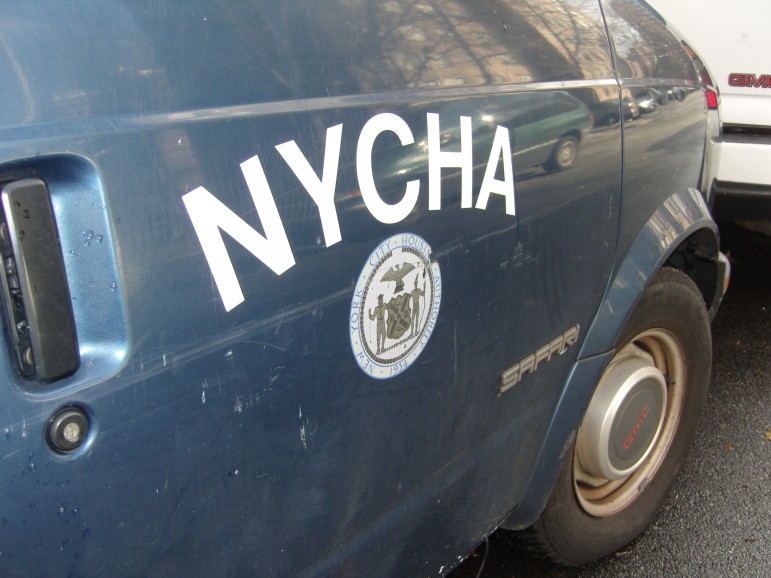
J. Murphy
A survey of 49 NYCHA buildings conducted by staff of the State Senate’s Independent Democratic Conference and City Council Public Housing Comfmittee Chairman Ritchie Torres brushes a few new details onto a familiar picture of substandard conditions at NYCHA. There’s their finding that at two developments, 80 percent of the exterior doors were unsecured. And there’s their revelation that at another NYCHA site, “residents of at least nine different floors may be trapped behind nonfunctioning fire doors.”
But where the IDC report stands apart from numerous earlier critiques of NYCHA—which tend to lay blame squarely on the federal government—is when it turns the spotlight on decisions by Albany and City Hall to leave the authority at the feds’ mercy.
“In 1998, Governor Pataki terminated operating subsidies to 15 state-financed NYCHA developments, burdening the Authority with an operating shortfall of $60 million annually,” the report reads. “New York City followed the example of New York State in the early 2000’s. … This move by the city put even more strain on NYCHA’s finances.”
The report sees grave risks to the housing in which some 400,000 New Yorkers live: “Without immediate and significant State support, NYCHA’s precarious financial standing and dilapidated building stock will become untenable, endangering the primary source of affordable housing for half-million low-income New Yorkers.”
Giving a nod to efforts by the de Blasio administration to right the ship, the Torres-IDC report also notes that some of the sharpest deterioration in NYCHA conditions occurred after the arrival of federal stimulus money. So the deal the IDC (which is led by State Sen. Jeff Klein) proposes would give the housing authority more money and more oversight.
Under the IDC plan, the state would provide $250 million to a capital fund if the city matched the state share dollar for dollar. It would restore $12 million in annual state operating support to NYCHA, which the report claims is enough to maintain 3,000 units. And it would create a new independent watchdog to monitor NYCHA performance.
One interesting IDC idea is to add to Mayor de Blasio’s mandatory inclusionary zoning plan a requirement that developers taking advantage of an upzoning perform repairs at a NYCHA site. The IDC report holds out the possibility that such a NYCHA Repair Certificate could entitle the developer to additional floor-area-ratio or FAR bonus—meaning their building could be even higher than the upzoning allows. That’s potentially controversial in areas already chafing under the arrival of new, dense development.
IDC also suggests that a developer could make repairs at NYCHA sites anywhere in the city, not necessarily at NYCHA properties near the new market-rate development, meaning NYCHA residents adversely affected by the new building wouldn’t necessarily enjoy a spinoff benefit.
And the IDC proposal suggests that developers make the NYCHA repairs themselves, raising the question of whether union labor would be used.
Still, in general terms at least, NYCHA welcomed the report, saying in a statement: “This report highlights the critical need for additional funding to maintain and preserve public housing. As a landlord, NYCHA recognizes the urgency and enormity of the problems that affect our residents’ quality of life, and the de Blasio administration has made it a priority to address this since day one. Thanks to the Mayor’s unprecedented support, NYCHA has streamlined repairs and made safety and security upgrades. There is still much more work to be done. We look forward to working with IDC and all State-elected officials, the City Council, our residents, and all stakeholders to ensure we can obtain the additional resources needed to repair and preserve this vital resource.”







